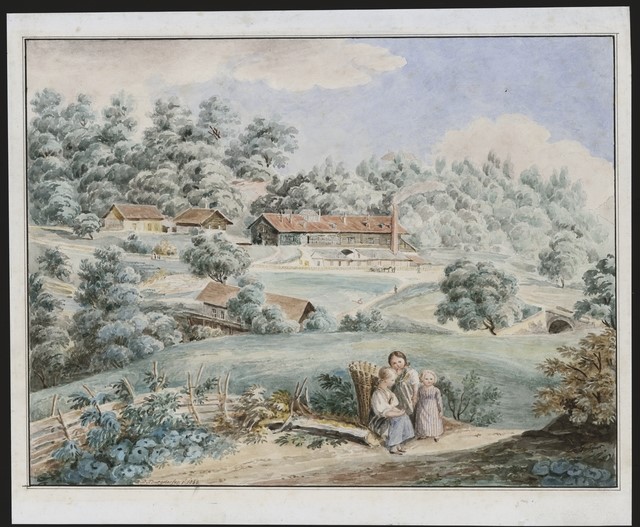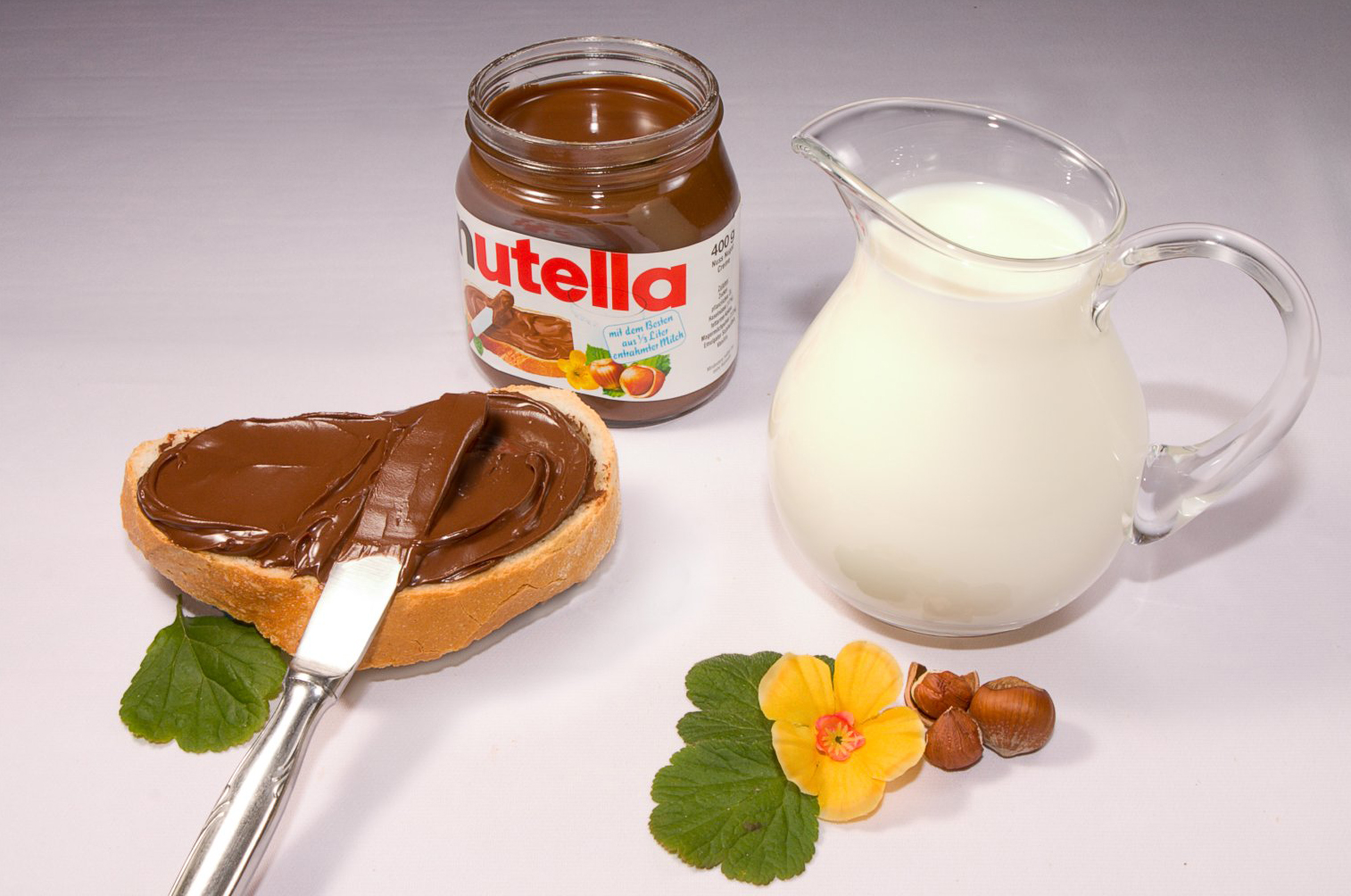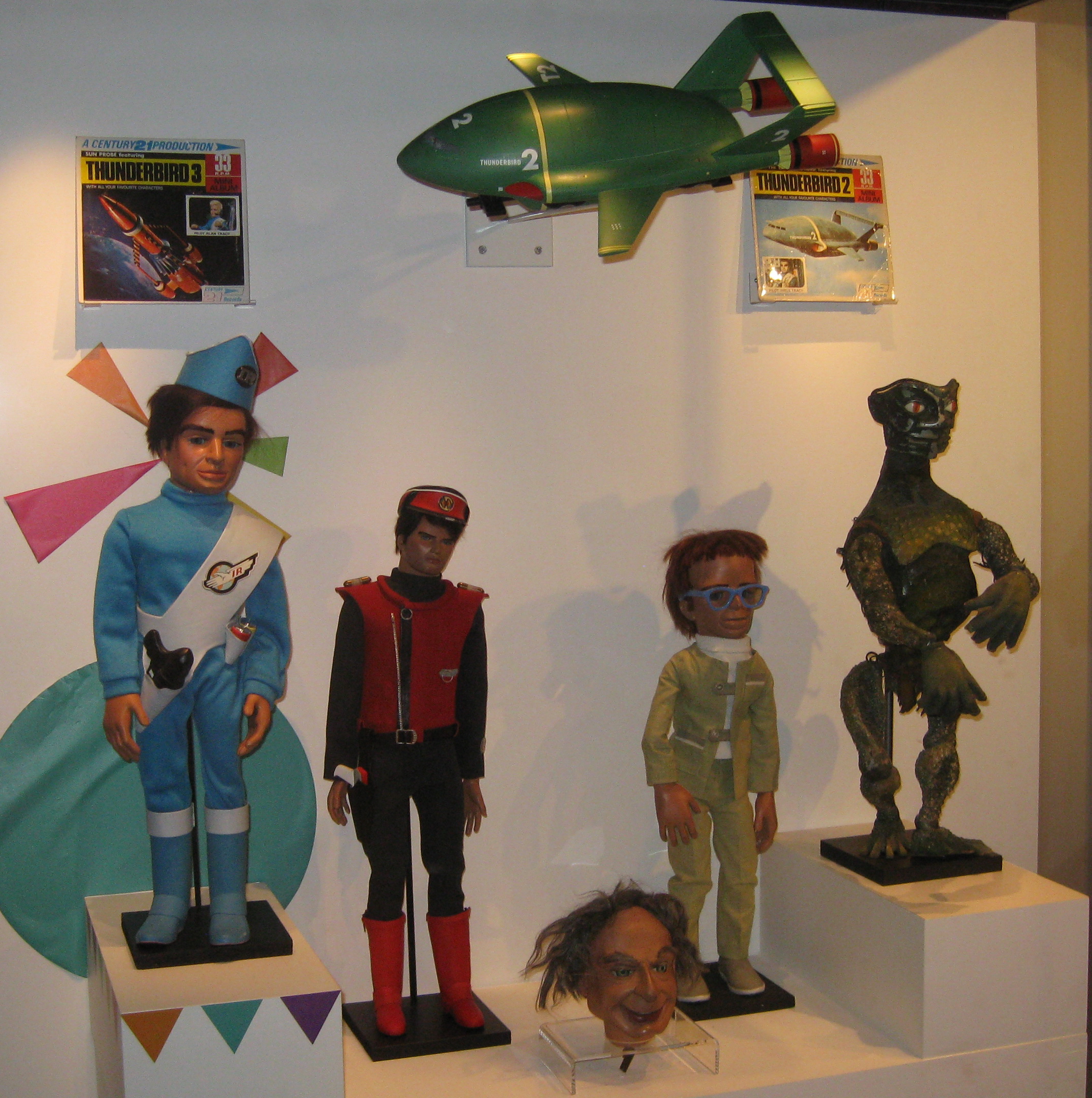|
Gianduja (chocolate)
''Gianduja'' or ''gianduia'' is a homogeneous blend of chocolate with 30% hazelnut paste, invented in Turin during Napoleon's regency (1796–1814). It can be consumed in the form of chocolate bar, bars or as a filling for chocolates. ''Gianduja'' is chocolate stretched with hazelnut butter. Similarly to standard chocolate, it is made in both plain and milk versions. It may also contain other nuts, such as almond. As a bar, ''gianduja'' resembles normal chocolate, except for the fact that it is softer due to the presence of hazelnut oil, which is liquid at room temperature unlike cocoa butter. However, like conventional chocolate, ''gianduja'' is usually Tempered chocolate, tempered. Chocolate spread, Chocolate hazelnut spreads are also notably inspired from ''gianduja''. They tend to use, however, other ingredients, typically cocoa powder and vegetable oils rather than cocoa butter-based chocolate. History The Continental System, imposed by Napoleon in 1806, prevented British ... [...More Info...] [...Related Items...] OR: [Wikipedia] [Google] [Baidu] |
Italy
Italy, officially the Italian Republic, is a country in Southern Europe, Southern and Western Europe, Western Europe. It consists of Italian Peninsula, a peninsula that extends into the Mediterranean Sea, with the Alps on its northern land border, as well as List of islands of Italy, nearly 800 islands, notably Sicily and Sardinia. Italy shares land borders with France to the west; Switzerland and Austria to the north; Slovenia to the east; and the two enclaves of Vatican City and San Marino. It is the List of European countries by area, tenth-largest country in Europe by area, covering , and the third-most populous member state of the European Union, with nearly 59 million inhabitants. Italy's capital and List of cities in Italy, largest city is Rome; other major cities include Milan, Naples, Turin, Palermo, Bologna, Florence, Genoa, and Venice. The history of Italy goes back to numerous List of ancient peoples of Italy, Italic peoples—notably including the ancient Romans, ... [...More Info...] [...Related Items...] OR: [Wikipedia] [Google] [Baidu] |
Chocolat Kohler
Chocolat Kohler was a chocolate producer based in Lausanne, founded in 1830 by the Kohler brothers. It is currently a brand owned by Nestlé. Kohler notably introduced hazelnut chocolate, which was perhaps the first combination chocolate bar. History The Kohler chocolate factory was one of the first in Switzerland, shortly following that of Cailler. The first factory was created in 1830 by Charles-Amédée Kohler, and his brother Frédéric Kohler, sons of Amédée Kohler (1761-1833), a trader in colonial foodstuffs since 1793. In 1849, Charles-Amédée Kohler bought the municipal sawmill in the Sauvabelin forest where he moved the production of chocolate. The newly built factory used the hydraulic power of the Flon river to allow the grinding of the cocoa beans. The installation of a steam engine would replace the hydraulic facility a few years later and allow a considerable development of the factory. In 1865, Charles-Amédée sold the business to his two sons Charles-Am� ... [...More Info...] [...Related Items...] OR: [Wikipedia] [Google] [Baidu] |
Italian Chocolate
Italian(s) may refer to: * Anything of, from, or related to the people of Italy over the centuries ** Italians, a Romance ethnic group related to or simply a citizen of the Italian Republic or Italian Kingdom ** Italian language, a Romance language *** Regional Italian, regional variants of the Italian language ** Languages of Italy, languages and dialects spoken in Italy ** Italian culture, cultural features of Italy ** Italian cuisine, traditional foods ** Folklore of Italy, the folklore and urban legends of Italy ** Mythology of Italy, traditional religion and beliefs Other uses * Italian dressing, a vinaigrette-type salad dressing or marination * Italian or Italian-A, alternative names for the Ping-Pong virus, an extinct computer virus * ''Italien'' (magazine), pro-Fascist magazine in Germany between 1927 and 1944 See also * * * Italia (other) * Italic (other) * Italo (other) * The Italian (other) * Italian people (other) Italian ... [...More Info...] [...Related Items...] OR: [Wikipedia] [Google] [Baidu] |
Gianduiotto
''Gianduiotto'' (; ) is a chocolate originating in the Piedmont region of Italy. ''Gianduiotti'' are shaped like ingots and individually wrapped in a (usually) gold- or silver-colored foil cover. It is a specialty of Turin, and takes its name from '' gianduja'', the preparation of chocolate and hazelnut used for ''gianduiotti'' and other sweets (including Nutella and '' bicerin di gianduiotto''). This preparation itself is named after Gianduja, a mask in ''commedia dell'arte'', a type of Italian theater, that represents the archetypal Piedmontese. Indeed, Gianduja's hat inspired the shape of the ''gianduiotto''. ''Gianduiotti'' are produced from a paste of sugar, cocoa and hazelnut ''Tonda Gentile delle Langhe''. The official "birth" of ''gianduiotti'' was in 1852 in Turin, by Pierre Paul Caffarel and Michele Prochet, the first to completely grind hazelnuts into a paste before adding them to the cocoa and sugar mix. Mixing hazelnut pieces to "standard" chocolates began at a ... [...More Info...] [...Related Items...] OR: [Wikipedia] [Google] [Baidu] |
Nutella
Nutella ( , , ; stylized in all lowercase) is a brand of brown, sweetened hazelnut cocoa spread. Nutella is manufactured by the Italian company Ferrero and was introduced in 1964, although its first iteration dates to 1963. History Pietro Ferrero owned a bakery in Alba, an Italian town known for the production of hazelnuts. In 1946, he sold the initial batch of ''Pasta Gianduja'', derived from '' gianduja''. Originally sold as a solid block, Ferrero started to sell a creamy version in 1951 as ''Supercrema gianduja''. In 1963, Ferrero's son Michele Ferrero, alongside Francesco Rivella, revamped ''Supercrema gianduja'' with the intention of marketing it throughout Europe. Its composition was modified, and it was renamed "Nutella". The first jar of Nutella left the factory in Alba on April 20, 1964. The product was an instant success and remains widely popular. In 2012, French senator Yves Daudigny proposed a tax increase on palm oil from €100 to €400 per tonne. At ... [...More Info...] [...Related Items...] OR: [Wikipedia] [Google] [Baidu] |
Cremino
The ''cremino'' is a chocolate originating in the Piedmont region of Italy. It is composed of three layers; the outer layers are made with '' gianduja'' chocolate, and the inner one can be made with either coffee, lemon or hazelnut paste. It is typically cubical and is sold wrapped in aluminum and a paper band which indicates the flavour. History This chocolate was created in the first half of the 19th century by Ferdinando Baratti who, with his associate Edoardo Milano in a laboratory in Turin (the future ), produced liquors and sweets. However, the first documentation about ''cremino'' are from 1934. Nowadays, Italian producers of ''cremino'' include Caffarel, , , Venchi, San Carlo, and Pernigotti. Fiat In 1911, the Italian car manufacturer Fiat launched a contest for Italian chocolate makers to create a new chocolate for publicising their . The contest was won by Majani, the first Italian chocolate maker established in 1796 in Bologna, who created a new ''cremino'' with ... [...More Info...] [...Related Items...] OR: [Wikipedia] [Google] [Baidu] |
List Of Italian Desserts And Pastries
This is a list of Italian cuisine, Italian desserts and Pastry, pastries. Italian cuisine has developed through centuries of social and political changes, with roots as far back as the 4th century BCE. Italian desserts have been heavily influenced by cuisine from surrounding countries and those that have invaded Italy, such as Greece, Spain, Austria, and France. Italian cuisine is also influenced by the Mediterranean climate and agriculture. Characteristics Italy has an extremely diverse range of cuisines, due to the many culinary influences throughout its history. Peaches, lemons, and pears are popular fruits for recipes, as well as sweet cheeses, such as ricotta and mascarpone. Coffee, especially espresso, are integral to Italian culture and cuisine, and is featured frequently in dessert recipes, such as tiramisu, tiramisù. Cold dairy desserts, such as ice cream and gelato, were introduced to the Western world through Italy. Italian desserts A B C D F G I K ... [...More Info...] [...Related Items...] OR: [Wikipedia] [Google] [Baidu] |
Cengage Learning
Cengage Group is an American educational content, technology, and services company for higher education, K–12, professional, and library markets. It operates in more than 20 countries around the world.(June 27, 2014Global Publishing Leaders 2014: Cengage publishersweekly.comCompany Info – Wall Street JournalCengage LearningCompany Overview of Cengage Learning, Inc. BloombergBusiness Company information The company is headquartered in , Massachusetts, and has some 5,000 employees worldwide across nearly 38 countries. It was headquartered at its |
Le Cordon Bleu
Le Cordon Bleu (; French: " The Blue Ribbon"; LCB) is a French hospitality and culinary education institution, teaching haute cuisine. Its educational focuses are hospitality management, culinary arts, and gastronomy. The institution consists of 35 institutes in 20 countries and has over 20,000 attendees. History The origin of the school name derives, indirectly, from the French Royal and Catholic Order of the Holy Spirit. This was a select group of the French nobility that had been knighted. The first creation of Royal Knights at the French Court was performed in 1578. The French Order of the Holy Spirit was for many centuries the highest distinction of the French Kingdom. Each member was awarded the Cross of the Holy Spirit, which hung from a blue silk ribbon. According to one story, this group became known for its extravagant and luxurious banquets, known as "cordons bleus". At the time, of the French Revolution, the monarchy and the Order were abolished, but the name ... [...More Info...] [...Related Items...] OR: [Wikipedia] [Google] [Baidu] |
Marionette
A marionette ( ; ) is a puppet controlled from above using wires or strings depending on regional variations. A marionette's puppeteer is called a marionettist. Marionettes are operated with the puppeteer hidden or revealed to an audience by using a vertical or horizontal control bar in different forms of theatres or entertainment venues. They have also been used in films and on television. The attachment of the strings varies according to its character or purpose. Etymology In French, means 'little Mary'. During the Middle Ages, string puppets were often used in France to depict biblical events, with the Virgin Mary being a popular character, hence the name. In France, the word can refer to any kind of puppet, but elsewhere it typically refers only to string puppets. History Antiquity Puppetry is an ancient form of performance. Some historians claim that they predate actors in theatre. There is evidence that they were used in Egypt as early as 2000 BC when string-opera ... [...More Info...] [...Related Items...] OR: [Wikipedia] [Google] [Baidu] |
Carnival In Italy
Carnival in Italy plays a very important role in Italian folklore, traditionally linked to regional masks, and is celebrated in many cities, some of which are known throughout the world for the special celebrations they organize for this occasion. It is a farewell party to eat, drink, and have fun before the limitations and solemnity of Lent. About a month before Ash Wednesday, Italians celebrate over many weekends with parades, masks, and ''Confetti#Etymology and Italian confetti, confetti''. The most famous Carnivals in Italy are those held in Venice, Viareggio, Ivrea, Cento, Apulia and Acireale. These Carnivals include masquerades and parades. The Carnival in Venice was first documented in 1296, with a proclamation by the Venetian Senate announcing a public festival the day before the start of Lent. Today, about 3 million people travel to Venice to take part in the famous Carnival. The Carnival of Viareggio is the second-most popular in Italy. The first Carnival of Viareggio p ... [...More Info...] [...Related Items...] OR: [Wikipedia] [Google] [Baidu] |
Gianduja (commedia Dell'arte)
Gianduja (; ) is one of the masks of the Italian ''commedia dell'arte'', typically representing the town of Turin (and Piedmont in general). Gianduja also became the namesake for a Piedmontese chocolate preparation. The mask depicts an honest peasant of Piedmontese country land, with a certain inclination for wine (particularly Brachetto d'Acqui),Italian Trade Commission 'Acqui or Brachetto d'Acqui (DOCG)"'' Italianmade.com Accessed: March 5, 2011, gastronomy and beautiful girls, while strictly faithful to his lover Giacometta, who is usually represented by a cute girl. Origins The character is believed to have originated as ''Gironi da Crina'' (in Ligurian) or ''Geralmo della Scrofa'' (in Italian), in Genoa. In the early 19th century, a puppeteer by the name of Giovanni Battista Sales got into trouble with the authorities who did not appreciate his sarcastic humor or the fact that the character had the same first name as a brother of Napoleon, who had invaded the region. S ... [...More Info...] [...Related Items...] OR: [Wikipedia] [Google] [Baidu] |




